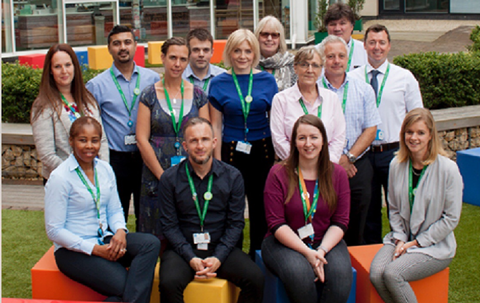
With 6,500 employees and up to 12,000 contractors, spread across 7,000 sites, public water supply and waste water treatment organisation Thames Water faces a considerable challenge when it comes to communication. Add to this the barriers that still exist when it comes to discussing mental health in the workplace, and it becomes even more impressive that one in 10 of its employees are trained mental health first aiders.
Karl Simons, health, safety, security and wellbeing director at Thames Water, says: “Mental health first aid is one part. Unless you have a comprehensive framework of care in the organisation, nobody’s going to come forward to these people anyway.”
The training, which comprises a half-day awareness course and a two-day full mental health first aid course, was introduced in 2015, and sits on top of a framework put in place five years ago, called Time to Talk. The aim of this strategy is to put psychological wellbeing on a par with physical health and safety.
“We present at every main board, executive and committee meeting about health and wellbeing, and physical health as well as psychological wellbeing is presented at the top table,” Simons explains. “It’s really important to have that equality alongside safety at board level, as it then sets the tone for the organisation.”
This commitment to open discussion and support around mental health is also demonstrated throughout Thames Water’s supply chain, as the organisation includes this in its suite of essential standards for suppliers.
In the annual personal medical assessments provided to each employee, Thames Water makes sure that psychological and physical wellbeing have parity. The organisation also runs awareness campaigns and distributes educational videos. All of this contributes to an overarching culture of care.
Couched within this is an extensive network of mental health first aiders, trained using Mental Health First Aid England’s framework, as well as an innovative virtual reality method that Simons explains is integral for ensuring that first aiders understand the experiences of those they are in place to help.
Once trained, the first aiders wear visible green lanyards, and are encouraged to raise the topic of mental wellbeing and promote healthy behaviours in team huddles. This is both part of their role, and a point of pride, Simons notes: “It has become like a badge of honour in the [organisation]; courses are fully booked for next year.”
While mental health first aiders are in place to guide employees to available supports, such as the in-house clinical team, Simons explains that it is also important to provide care for these individuals themselves. For example, he uses social media service Yammer: “It allows [me] to connect with a massive body of people, and it allows them to share questions and challenges they may be facing, and get answers; everybody learns at the same time together.”
Overall, it is the hard work done over the years to open up communications around mental wellbeing that Simons feels ensures the effectiveness, and indeed popularity, of the mental health first aid programme.
“I see a lot of organisations training mental health first aiders, and it’s a brilliant way, if done correctly, to create pathways to get people help,” he concludes. “But if [employers] don’t have the supporting framework, then first [their] culture isn’t correct and nobody’s going to come forward anyway, or when somebody does come forward, the first aiders [will not] know where to go.
“In the last year, for every one physical first aid intervention, I’ve had five mental health first aid interventions. That’s people feeling confident to come forward and seek help, but it’s only happened because we’ve created this culture of care.”
Read more...
How to ensure mental health first aiders are effective
Carrie Pairman: Mental health first aid is a must for businesses to fully support their staff











